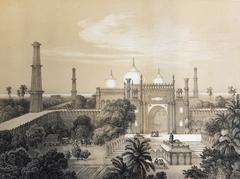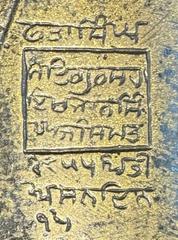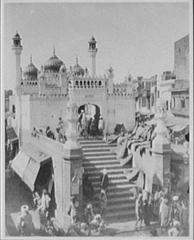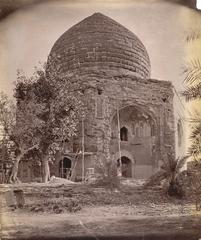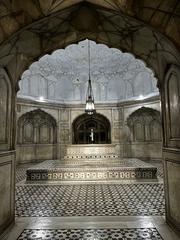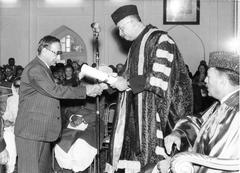Comprehensive Guide to Visiting Lahore, Lahore District, Pakistan
Date: 14/08/2024
Captivating Introduction
Welcome to Lahore, the beating heart of Pakistan, where history, culture, and modernity intertwine in a dazzling display of life. Imagine wandering through the same streets where emperors once roamed, where ancient fortresses guard the tales of bygone eras, and where the aroma of spices and the sound of bustling bazaars create a sensory tapestry that is uniquely Lahore. This city is not just a place; it’s an experience, a living, breathing narrative that invites you to dive deep into its vibrant soul.
Lahore’s historical significance is immense, with its roots tracing back thousands of years. According to legend, it was founded by Lava, the son of the Hindu god Rama, making it a city steeped in myth and tradition (Wikipedia). Over the centuries, Lahore has been a melting pot of cultures and influences, from the grandeur of the Mughal Empire to the elegance of British colonial architecture. Landmarks such as the Lahore Fort and the Badshahi Mosque stand as testaments to the city’s rich and diverse history (Tourism in Pakistan).
Today, Lahore is a bustling metropolis where old meets new in a harmonious blend. The city’s cultural significance is celebrated through its numerous festivals, from the Basant Kite Festival to the vibrant Independence Day celebrations (Google Arts & Culture). And let’s not forget the food! Lahore’s culinary scene is legendary, offering everything from street food delights to gourmet experiences.
As you prepare to explore Lahore, remember that this guide is your key to unlocking the city’s secrets. From hidden gems like the cozy café in the Walled City where you can sip chai and listen to local folk tales, to interactive challenges like finding the secret inscription in the Sheesh Mahal, this guide offers a journey that is as enriching as it is exciting. So, buckle up and get ready to discover Lahore like never before!
Table of Contents
- Historical Significance of Lahore
- Cultural Significance of Lahore
- Must-See Attractions in Lahore
- Lahore Fort (Shahi Qila)
- Badshahi Mosque
- Shalimar Gardens
- Walled City of Lahore
- Lahore Museum
- Minar-e-Pakistan
- Anarkali Bazaar
- Wagah Border Ceremony
- Data Darbar
- Tomb of Jahangir
- Lahore Zoo and Safari Park
- Food Street on MM Alam Road
- Jilani Park (Racecourse Park)
- Liberty Market
- Chauburji
- Hazuri Bagh
- Sheesh Mahal
- Gaddafi Stadium
- Baghe-e-Jinnah
- Tomb of Nur Jahan
- Lahore Bird Sanctuary
- Lahore Safari Park
- Food Street on Fort Road
Historical Significance of Lahore
Ancient and Medieval History
Lahore’s history stretches back thousands of years, with its origins shrouded in legend and myth. According to Hindu tradition, the city was founded by Lava, the son of the Hindu god Rama, and a temple dedicated to Lava still exists within the Lahore Fort (Wikipedia). The earliest recorded mention of Lahore is found in the 982 AD ‘Hudud-i-Alam,’ which describes it as a small city with large temples, markets, and orchards (Google Arts & Culture).
Mughal Era
The Mughal Empire left an indelible mark on Lahore, transforming it into a city of architectural splendor and cultural richness. The Mughals, who ruled from 1524 to 1752, constructed some of the city’s most iconic landmarks. The Lahore Fort, built by Akbar the Great in 1575, is a UNESCO World Heritage Site and a testament to Mughal architectural prowess (Tourism in Pakistan). The fort includes the Sheesh Mahal (Palace of Mirrors), Moti Masjid (Pearl Mosque), and Naulakha Pavilion, each showcasing intricate Mughal artistry.
Challenge: Can you find the secret inscription in the Sheesh Mahal? Hint: It’s hidden among the mirrors!
Adjacent to the fort is the Badshahi Mosque, constructed by Emperor Aurangzeb in 1673. This mosque, the second largest in Pakistan, is renowned for its red sandstone and white marble decorations (Rabt Marketing). Another Mughal-era marvel is the Shalimar Gardens, built in the 17th century, which features terraced levels, flowing water, and meticulously manicured lawns (History of Pakistan).
Sikh and British Colonial Periods
Lahore’s significance continued under Sikh and British rule. The city became the capital of the Sikh Empire under Maharaja Ranjit Singh, who ruled from 1799 to 1839. His legacy includes the Samadhi of Ranjit Singh, a mausoleum that houses his ashes and those of his queens and concubines (Rabt Marketing). The British colonial period further enriched Lahore’s architectural landscape, blending traditional and colonial styles. Notable structures from this era include the Lahore Museum and the General Post Office (Dawn).
Post-Independence Era
Following the partition of India in 1947, Lahore became a focal point of communal violence, resulting in significant loss of life and damage to historical monuments. However, with the assistance of the United Nations, the city was rebuilt, and many of its scars were erased (Wikipedia). The city also played a crucial role during the 1965 Indo-Pak war, with battlefields and trenches still visible near the Wagah border (Wikipedia).
Cultural Heritage Sites
Lahore is home to numerous cultural heritage sites that reflect its rich history. The Walled City of Lahore, a UNESCO World Heritage Site, is a labyrinth of narrow streets, historic buildings, and bustling bazaars. Key landmarks within the Walled City include the Lahore Gate, Shahi Hammam (royal bath), and the Wazir Khan Mosque, renowned for its intricate tile work (Tourism in Pakistan).
Did you know there’s a hidden café inside the Walled City where you can sip on chai while listening to local folk tales?
Another significant site is the Minar-e-Pakistan, a national monument built in the 1960s to commemorate the Lahore Resolution of 1940. The monument offers panoramic views of the city from its observation deck (Tourism in Pakistan). Additionally, the Chauburji, a Mughal-era structure with four distinctive pillars, is known for its beautiful calligraphy and geometric designs (Tourism in Pakistan).
Architectural Marvels
Lahore’s architectural heritage is a blend of Mughal, Sikh, and British influences. The Lahore Fort and Badshahi Mosque are prime examples of Mughal architecture, while the Samadhi of Ranjit Singh and the Gurdwara Dera Sahib reflect Sikh contributions. British colonial architecture is evident in buildings like the Lahore Museum and the General Post Office (CNN).
The city’s modern architectural landscape includes themed developments like Bahria Town, which features replicas of ancient Egyptian structures and other notable designs (Wikipedia). Lahore’s art galleries also display a mix of Mughal-era artifacts and contemporary artworks, showcasing the city’s evolving artistic heritage (Wikipedia).
Festivals and Cultural Events
Lahore’s vibrant culture is celebrated through numerous festivals and events. The city hosts concerts, art exhibitions, and literature festivals, particularly during the cooler months. These events reflect Lahore’s love for art, poetry, architecture, and music, influenced by its Sufi, saint, and mystic heritage (Google Arts & Culture).
Visitor Tips
For tourists visiting Lahore, exploring its historical sites offers a unique opportunity to delve into the city’s rich past. Key sites to visit include the Lahore Fort, Badshahi Mosque, Shalimar Gardens, and the Walled City. Visitors should also explore the bustling Anarkali Bazaar for a taste of local culture and cuisine (Tourism in Pakistan).
To make the most of their visit, tourists should consider hiring a local guide to provide insights into the historical and cultural significance of each site. Additionally, visiting during the cooler months (October to March) is recommended to avoid the extreme heat of the summer.
Pro tip: When visiting a local’s home, always remember to take off your shoes. And if offered chai, never say no. It’s practically a crime!
Cultural Significance of Lahore
Historical Landmarks
Lahore Fort
Lahore Fort, a UNESCO World Heritage Site, stands as a testament to the grandeur of the Mughal Empire. The fort’s intricate marble work, ornate frescoes, and majestic domes reflect the architectural brilliance of the era. Key structures within the fort include the Diwan-e-Khas (Hall of Private Audiences) and the Naulakha Pavilion, which showcase Mughal craftsmanship (Traveling.com.pk).
Badshahi Mosque
Built in 1671, the Badshahi Mosque is one of the largest mosques in the world, capable of accommodating up to 100,000 worshippers. Its architecture, characterized by carved red sandstone, is a symbol of the Mughal Empire’s opulence. The mosque’s vast courtyard and intricate details make it a must-visit landmark (Diary of a Nomad).
Shalimar Gardens
The Shalimar Gardens, another UNESCO World Heritage Site, were created in the mid-1600s to embody the Mughal concept of paradise on earth. The gardens feature 410 fountains, marble pools, and a variety of trees and pavilions, offering a serene escape from the city’s hustle and bustle (Intentional Detours).
Religious and Cultural Sites
Wazir Khan Mosque
The Wazir Khan Mosque, built in the 17th century, is renowned for its stunning tile work and intricate frescoes. The mosque’s vibrant colors and patterns make it a visual feast, reflecting the artistic heritage of the Mughal period (Traveling.com.pk).
Valmiki Temple
Located near the Alamgiri Gate of Lahore Fort, the Valmiki Temple is dedicated to Lav, the founder of Lahore. The temple houses several deities of the Hindu pantheon and is a significant site for the Hindu community in Lahore. The temple’s courtyard and surrounding structures offer a glimpse into the city’s diverse religious history (DailyO).
Museums and Cultural Institutions
Lahore Museum
The Lahore Museum is a treasure trove of historical artifacts, including ancient coins, jewelry, and pottery. The museum’s impressive collection reflects Lahore’s rich history and is a must-visit for anyone looking to delve deeper into the city’s past (Traveling.com.pk).
Festivals and Celebrations
Independence Day
Lahore plays a central role in Pakistan’s Independence Day celebrations on August 14. The city is adorned with flags, banners, and illuminations, creating a festive atmosphere. Various public and private sector departments host special functions, including seminars, photographic exhibitions, and artistic displays, to commemorate the day (The News).
Local Cuisine
Street Food
Lahore is renowned for its rich and diverse culinary scene. Popular dishes include nihari, paya, biryani, kebabs, and falooda. The city’s bustling bazaars, such as Anarkali, offer a plethora of street food options that reflect the local flavors and culinary traditions (Tourist Secrets).
Visitor Tips
Accessibility
Many of Lahore’s historical landmarks are upgrading to inclusive infrastructure, ensuring ramps, elevators, and accessible restrooms. This makes the city more accessible for visitors with disabilities (Traveling.com.pk).
Dress Code
When visiting religious and historical sites in Lahore, it is important to dress modestly. Visitors should cover their shoulders and knees to respect local cultural norms and ensure a warm welcome (Traveling.com.pk).
Best Time to Visit
The best time to visit Lahore is during the winter months (October to February) when the weather is pleasant and suitable for outdoor exploration. This period allows tourists to comfortably explore the city’s landmarks and participate in local festivals (Tourist Secrets).
Local Hospitality
Warmth and Friendliness
Lahoris are known for their warm hospitality and genuine smiles. Visitors often find themselves welcomed with open arms, making their stay in the city even more memorable. Engaging with the locals can provide a deeper understanding of Lahore’s culture and traditions (Tourist Secrets).
Safety Considerations
General Safety
Lahore is generally a safe city for tourists, but it is advisable to take necessary precautions such as avoiding traveling alone at night and keeping valuables secure. The city’s safety measures ensure that tourists can explore its cultural and historical sites with peace of mind (Tourist Secrets).
By exploring these aspects of Lahore, visitors can gain a comprehensive understanding of the city’s cultural significance and enjoy a memorable experience.
Bonus: Local Secrets and Hidden Gems
Cooco’s Den
For a truly local experience, visit the hidden gem of Cooco’s Den, a restaurant with an amazing view of the Badshahi Mosque. The art-filled interior and the rooftop dining offer a unique, immersive experience.
Interactive Challenges
Shalimar Gardens Quest
Challenge: Find and photograph the oldest tree in Shalimar Gardens. Bonus points if you spot a local wedding there!
Local Lingo Lessons
Key Phrases
Learn to say ‘Shukriya’ (Thank you) and you’ll win hearts instantly!
Call to Action
Ready to uncover Lahore’s secrets?
Download Audiala now and let the adventure begin!
Must-See Attractions in Lahore
Lahore Fort (Shahi Qila)
Step into the Lahore Fort, a UNESCO World Heritage Site that takes you back to the splendor of the Mughal Empire. Covering over 20 hectares, this fort is a beautiful blend of Islamic, Persian, and Indian architectural styles. Key highlights include the Sheesh Mahal (Palace of Mirrors), Naulakha Pavilion, and Diwan-i-Aam (Hall of Public Audience). As you wander through its intricate marble inlays and frescoes, you’ll feel like you’ve stepped into a fairy tale. Pro tip: Visit at sunset for an ethereal experience (Pakistan Travel Blog).
Badshahi Mosque
Right across from the Lahore Fort stands the majestic Badshahi Mosque, one of the largest in the world. Built in 1673 by Mughal Emperor Aurangzeb, this mosque can accommodate up to 55,000 worshippers. Its massive courtyard, stunning red sandstone structure, and intricate marble domes will leave you in awe. Don’t miss the elaborate frescoes and calligraphy inside – they’re a feast for the eyes (Pakistan Travel Blog).
Shalimar Gardens
Constructed by Mughal Emperor Shah Jahan in 1641, the Shalimar Gardens are a serene oasis in the bustling city. Divided into three terraces, each with its own fountains, water channels, and flower beds, these gardens are a masterpiece of Mughal landscape architecture. The Persian influence is evident in the symmetrical layout and the central role of water (Pakistan Travel Blog).
Walled City of Lahore
Explore the Walled City of Lahore, a labyrinth of narrow alleys, lively bazaars, and historic buildings. Key attractions include the Wazir Khan Mosque, renowned for its intricate tile work and frescoes, and the Delhi Gate, one of the 13 gates that once guarded the city. A stroll through the Walled City offers a glimpse into Lahore’s rich cultural and historical heritage. Pro tip: Hire a local guide to uncover hidden gems! ([Laure Wanders](https://www.laurewanders.com/best-places-to-visit-in-lahore/### Lahore Museum Established in 1865, the Lahore Museum houses an extensive collection of artifacts, including Gandharan sculptures, Mughal paintings, and Islamic calligraphy. The museum’s architecture, a blend of Mughal and colonial styles, is an attraction in itself. Don’t miss the exhibits on the history and culture of the Sikh community (Pakistan Travel Blog).
Minar-e-Pakistan
Located in Iqbal Park, Minar-e-Pakistan commemorates the Lahore Resolution of 1940. Standing at 70 meters, it offers panoramic views of the city. The surrounding park is perfect for picnics and leisurely walks, especially during the evenings (Pakistan Travel Blog).
Anarkali Bazaar
Dive into the sensory overload that is Anarkali Bazaar, one of the oldest markets in South Asia. From traditional handicrafts and clothing to spices and street food, this bustling hub has it all. Old Anarkali is famed for its food street, while New Anarkali offers a plethora of shops selling textiles and jewelry (Pakistan Travel Blog).
Wagah Border Ceremony
Experience the patriotic fervor at the Wagah Border Ceremony, a daily military ritual at the border between Pakistan and India. This display of military pageantry attracts large crowds and is a must-see for anyone interested in the region’s dynamics (Pakistan Travel Blog).
Data Darbar
Data Darbar is the largest Sufi shrine in South Asia, dedicated to the 11th-century Sufi saint Abul Hassan Ali Hujwiri. The shrine attracts millions of pilgrims annually and includes a mosque, a library, and a free kitchen that serves meals to thousands daily (Travel Setu).
Tomb of Jahangir
Located in Shahdara Bagh, the Tomb of Jahangir is the final resting place of the Mughal Emperor Jahangir. The tomb is set in a large garden with intricate marble inlays and frescoes, also including the tombs of Jahangir’s wife, Nur Jahan, and his son, Shah Jahan (Travel Setu).
Lahore Zoo and Safari Park
Established in 1872, Lahore Zoo is one of the oldest in South Asia, housing a variety of animals. Lahore Safari Park offers a more natural habitat for animals like zebras, giraffes, and rhinos. Both are ideal for families and animal lovers (Pakistan Travel Blog).
Food Street on MM Alam Road
MM Alam Road’s Food Street offers a wide range of culinary delights, from traditional Pakistani dishes to international cuisine. Must-try dishes include haleem, biryani, and various types of kebabs (Travel Setu).
Jilani Park (Racecourse Park)
Jilani Park, also known as Racecourse Park, features beautifully landscaped gardens, jogging tracks, and a lake. It hosts various cultural events throughout the year, with the annual Spring Festival being a highlight (Travel Setu).
Liberty Market
Liberty Market is a popular shopping destination, offering products ranging from clothing and accessories to electronics and home decor. It’s a great place to shop for souvenirs (Travel Setu).
Chauburji
Chauburji is a historic monument known for its four towering minarets and intricate tile work, dating back to the Mughal era (Travel Setu).
Hazuri Bagh
Hazuri Bagh is a historic garden located between the Lahore Fort and the Badshahi Mosque. The garden features a baradari (pavilion) built by Maharaja Ranjit Singh in 1818 (Travel Setu).
Sheesh Mahal
Located within the Lahore Fort, Sheesh Mahal, or the Palace of Mirrors, is adorned with intricate mirror work and frescoes (Pakistan Travel Blog).
Gaddafi Stadium
Gaddafi Stadium is Pakistan’s premier cricket stadium, hosting numerous international matches (Travel Setu).
Baghe-e-Jinnah
Baghe-e-Jinnah, also known as Lawrence Gardens, features lush gardens, walking trails, and a library (Travel Setu).
Tomb of Nur Jahan
The Tomb of Nur Jahan, located in Shahdara Bagh, is the final resting place of the Mughal Empress Nur Jahan (Travel Setu).
Lahore Bird Sanctuary
The Lahore Bird Sanctuary is home to over 150 species of birds, including peacocks and parrots (Pakistan Travel Blog).
Lahore Safari Park
Lahore Safari Park offers a unique wildlife experience with its open enclosures and safari tours (Pakistan Travel Blog).
Food Street on Fort Road
Fort Road Food Street is a culinary hotspot offering a wide range of traditional Pakistani dishes (Travel Setu).
Conclusion
Lahore is a city that never ceases to amaze. Whether you’re exploring its ancient forts, strolling through its lush gardens, or indulging in its delectable cuisine, there’s always something new to discover. Ready to unlock Lahore’s secrets and stories? Download Audiala, your perfect travel companion, for expertly crafted audio guides that bring the city’s history to life. Your adventure awaits!
Call to Action
In conclusion, Lahore is more than just a city; it is a living testament to centuries of history, culture, and human endeavor. From the awe-inspiring architecture of the Lahore Fort and Badshahi Mosque to the vibrant streets of the Walled City, every corner of Lahore has a story to tell. The city’s rich tapestry of Mughal, Sikh, and British colonial influences is evident in its diverse architectural heritage and cultural landmarks (CNN).
Lahore’s cultural significance extends beyond its historical landmarks. The city’s festivals, such as the Basant Kite Festival and Independence Day celebrations, are a testament to its vibrant and dynamic spirit. The local cuisine, with its rich flavors and aromatic spices, offers a culinary journey that is as memorable as the city’s historical sites (Tourist Secrets).
For those seeking a deeper connection with the city, Lahore offers numerous hidden gems and local secrets. Whether it’s dining at Cooco’s Den with its stunning views of the Badshahi Mosque or exploring the lush Shalimar Gardens, there’s always something new to discover (Intentional Detours).
As you prepare to embark on your journey through Lahore, consider using Audiala, the ultimate travel companion. With expertly crafted audio guides that bring the city’s history to life, Audiala offers a unique and immersive way to explore Lahore’s secrets and stories. Download Audiala now and let your adventure begin!
References
- Wikipedia. (n.d.). History of Lahore. https://en.wikipedia.org/wiki/History_of_Lahore
- Tourism in Pakistan. (n.d.). Historical Places in Lahore. https://tourisminpakistan.net/historical-places-in-lahore/
- Google Arts & Culture. (n.d.). Lahore: The City of History and Culture. https://artsandculture.google.com/story/lahore-the-city-of-history-and-culture/_wWRJHqaQDk7sg
- CNN Travel. (n.d.). Pakistan: Lahore’s Mughal Treasures. https://www.cnn.com/travel/article/pakistan-lahore-mughal-treasures/index.html
- Tourist Secrets. (n.d.). 17 Things to Know Before You Go to Lahore. https://www.touristsecrets.com/travel-tips/17-things-to-know-before-you-go-to-lahore/
- Intentional Detours. (n.d.). Best Places to Visit in Lahore. https://intentionaldetours.com/best-places-to-visit-lahore/

















